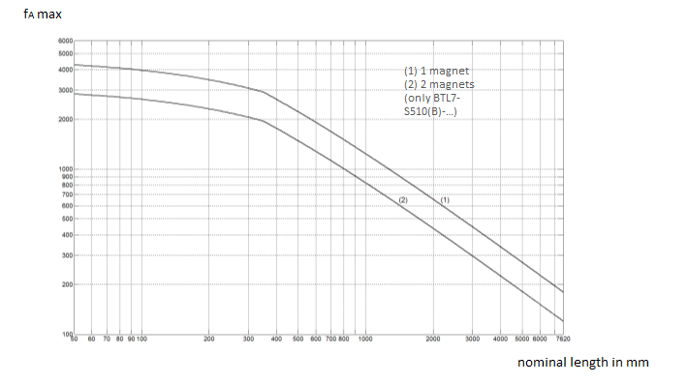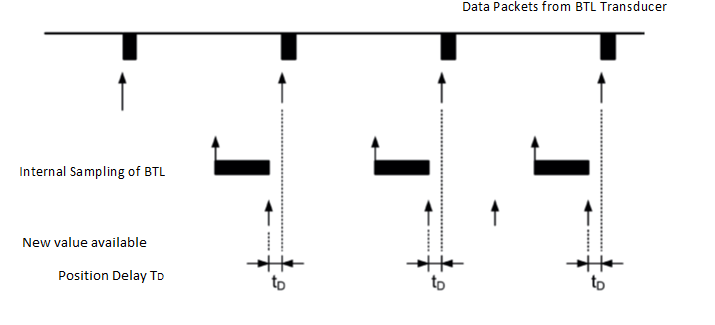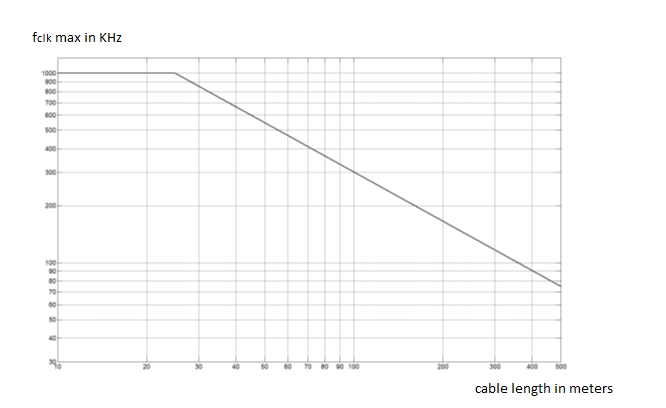For the Balluff SSI interface BTL transducers, you can opt for a ‘Synchronous Operation’ transducer if you need the internal sampling cycle of the transducer to match the external sampling cycle of the device generating the clock pulses.
This is desired for closed loop feedback systems since a uniform and brief timing is often required for such applications.
A new value is sent out by the transducer for every packet of external clock pulses. The external
sampling rate TA is the time interval between consecutive packets of clock pulses.
External Clock Packets

This will determine the response time of the system.
It can be set anywhere between the lowest at 62.5 Hz to fA max which is dependent of the stroke
length & number of position markers or magnets. The best possible external sampling rate can be determined from the graph below.
The external sampling frequency must be kept as constant as possible.
 In response to the packets of clock pulses, the synchronous operation BTL transducer sends out new values of data in sync with the external clock.
In response to the packets of clock pulses, the synchronous operation BTL transducer sends out new values of data in sync with the external clock.
This can be visualized in the picture below.


Owing to inverted pulses, the SSI digital interface BTL transducer can be used over long cable lengths of approx. 500m which makes it ideal for distant control room operations.
However, the clock frequency fclk (or the time-period between consecutive clock pulses within the packet of clock pulses) of the external device must be properly selected.
This is dependent on the cable length of the BTL transducer and can be determined from the graph below.

The synchronous operation BTL Transducer ensures fast, continuous, and timely feedback with the smallest constant delay thereby returning reliable data in a rugged housing under challenging conditions over many years of operation.
If not specifically requested, then one can use the standard asynchronous BTL transducer.
During asynchronous operation, the external sampling frequency is independent of the internal
sampling frequency of the BTL.
Depending on the external query point (clock pulse packet), the position sent out by the BTL
transducer is more or less current, and the position delay tD is therefore never constant.
In the worst case, it is equal to the internal sampling period.
The following graphic shows the behavior of internal and external sampling in asynchronous
operation: 

